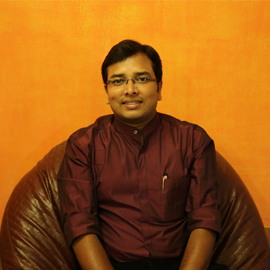Why BJP's reasons to defend J&K pull-out don't add up

While announcing their pull-out from the government in Jammu and Kashmir, Bharatiya Janata Party (BJP) leaders attributed their decision to three reasons: the rise of “terrorism, violence and radicalisation” in Kashmir Valley; “danger” to “fundamental rights of the citizens” and lack of developmental work in all three regions of the state.
More surprising than the sudden withdrawal is the reasons that the party has given. The state of affairs in J&K today are certainly much worse than they were in 2014, before the PDP-BJP alliance took charge.
Ceasefire violations have gone up manifold, militancy has only risen, security forces have suffered massive casualties and unrest among the general population has spiked. After jointly presiding over this downturn for more than half a term, how can BJP suddenly distance itself from it?
If Mehbooba Mufti was the Chief Minister, BJP had a deputy chief minister. If PDP had 14 ministers in the 25-member Cabinet, BJP had nine. The blame for the worsened crisis in the state can not be for the PDP to bear alone.
The lack-of-development theory that the BJP is trying to sell also flies in the face of what the party has been trying to portray ever since it came to power at the Centre. None other than Prime Minister Narendra Modi himself has made it a point to visit J&K every six-eight months.
On each occasion, he has also made it a point to either lay the foundation of a development project or inaugurate one. These ribbon-cutting events have been spread across all the three regions – Jammu, Kashmir and Ladakh.
In July 2014, Modi inaugurated the 240 megawatt Uri-II hydropower project, near the Line of Control. During the same visit, he also inaugurated a train to Vaishno Devi from Jammu's Katra.
In August 2014, he visited Ladakh to lay the foundation stone of the 330-km Leh-Srinagar transmission line and also inaugurate two hydro-power projects in the region.
In November 2015, he announced Rs 80,000 crore package for the state in Srinagar, inaugurated 450 MW Baglihar Hydro Electric Project Stage-II and laid the foundation stone of four-laning of Udhampur-Ramban and Ramban-Banihal section of National Highway 44.
In April 2017, Modi inaugurated the Chenani-Nashri tunnel on the Jammu-Srinagar highway.
In November 2017, the Union New and Renewable Energy Ministry also announced that a 1.5-mw small hydropower plant had been commissioned in in Biaras Drass of Kargil under the Prime Minister’s Ladakh Renewable Energy Initiative.
Most recently, Modi visited the state last month to inaugurate as many as seven projects. These included the 330 mw Kishanganga Hydropower Station in Kashmir's Bandipore, launching of work on the Zojila Tunnel to connect Srinagar, Kargil and Leh, laying the foundation stone of the Srinagar Ring Road, the Pakul Dul Power Project in Jammu's Kishtwar, Jammu Ring Road and also the inauguration of the Tarakote Marg and the Siar Dabri-Bhawan material ropeway at the Vaishno Devi shrine.
If PDP was not moving in tandem with the BJP, also in power at the Centre, how were these range of inaugurations happening? The pull-out from the government appears to have been motivated by some other concern. As of now, what this concern is is not clear but the reasons given by BJP are a smokescreen.
Adding fuel to these speculations is the PDP's response to the withdrawal. She sent her resignation to the Governor and spoke to the press later. While admitting that she was taken by surprise, neither her words nor demeanor conveyed a sense of hurt or peeve. She also didn't portray the BJP's move as a betrayal.
Kashmir is a dark theatre and it is often not known what is going on behind the scenes. One can only hope that the fall of the state government is not the harbinger of something more sinister.


